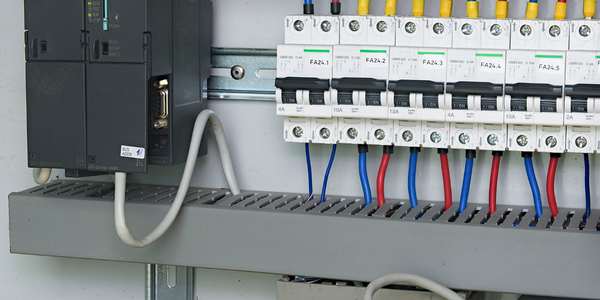MetaX Integrated Circuits (Shanghai) Co. Ltd. Enhancing Operational Efficiency, Reliability and Disaster Recovery with Integrated DDI

公司规模
SME
地区
- Asia
国家
- China
产品
- EfficientIP’s SOLIDserverTM DDI
- EfficientIP’s DNS GSLB
技术栈
- Microsoft DNS
- Active Directory
实施规模
- Enterprise-wide Deployment
影响指标
- Cost Savings
- Productivity Improvements
- Digital Expertise
技术
- 基础设施即服务 (IaaS) - 云计算
适用行业
- 电子产品
适用功能
- 离散制造
- 商业运营
用例
- 过程控制与优化
- 网络安全
服务
- 云规划/设计/实施服务
- 系统集成
关于客户
MetaX is committed to providing full-stack GPU chips and solutions for heterogeneous computing. The company was founded in Shanghai in September 2020 and has established wholly-owned subsidiaries and R&D centers in Beijing, Nanjing, Chengdu, Hangzhou, Shenzhen and Wuhan. They were looking for a more structural way to manage IP space, DHCP and DNS on one platform in order to prevent error-prone network service configuration and improve team working efficiency.
挑战
MetaX was looking for a more structural way to manage IP space, DHCP and DNS on one platform to prevent error-prone network service configuration and improve team working efficiency. They were using Microsoft DNS, managed by Active Directory, which had certain limitations making it incapable of adequately supporting the rapidly-growing business requirements. The IT team was aiming to improve IT performance as well as security. It was clear the whole IT infrastructure needed to be redesigned taking into consideration business requirements. Having a high-availability, integrated DDI (DNS-DHCP-IPAM) solution was mandatory to make this happen.
解决方案
After evaluating solutions including those from local vendors, the decision was made to take EfficientIP’s SOLIDserverTM DDI, which offered the rich features required by MetaX. Key features included the dynamic integrated DNS/DHCP/IP Address management solution, and SmartArchitecture templates for simplified, fast implementation. The resulting stable DDI platform enabled the MS AD structure to be easily changed, as well as the email environment. EfficientIP’s DNS GSLB (Global Server Load Balancing) product was also leveraged, to enhance application availability via load balancing of application traffic and health checking functionalities.
运营影响
数量效益

Case Study missing?
Start adding your own!
Register with your work email and create a new case study profile for your business.
相关案例.

Case Study
Remote Temperature Monitoring of Perishable Goods Saves Money
RMONI was facing temperature monitoring challenges in a cold chain business. A cold chain must be established and maintained to ensure goods have been properly refrigerated during every step of the process, making temperature monitoring a critical business function. Manual registration practice can be very costly, labor intensive and prone to mistakes.

Case Study
Predictive maintenance in Schneider Electric
Schneider Electric Le Vaudreuil factory in France is recognized by the World Economic Forum as one of the world’s top nine most advanced “lighthouse” sites, applying Fourth Industrial Revolution technologies at large scale. It was experiencing machine-health and unplanned downtime issues on a critical machine within their manufacturing process. They were looking for a solution that could easily leverage existing machine data feeds, be used by machine operators without requiring complex setup or extensive training, and with a fast return on investment.

Case Study
Cloud Solution for Energy Management Platform-Schneider Electric
Schneider Electric required a cloud solution for its energy management platform to manage high computational operations, which were essential for catering to client requirements. As the business involves storage and analysis of huge amounts of data, the company also needed a convenient and scalable storage solution to facilitate operations efficiently.

Case Study
Leveraging the IoT to Gain a Competitive Edge in International Competition
Many large manufacturers in and outside Japan are competing for larger market share in the same space, expecting a growing demand for projectors in the areas of entertainment, which requires glamor and strong visual performance as well as digital signage that can attract people’s attention. “It is becoming more and more difficult to differentiate ourselves with stand-alone hardware products,” says Kazuyuki Kitagawa, Director of Service & Support at Panasonic AVC Networks. “In order for Panasonic to grow market share and overall business, it is essential for us to develop solutions that deliver significant added value.” Panasonic believes projection failure and quality deterioration should never happen. This is what and has driven them to make their projectors IoT-enabled. More specifically, Panasonic has developed a system that collects data from projectors, visualizes detailed operational statuses, and predicts issues and address them before failure occurs. Their projectors are embedded with a variety of sensors that measure power supply, voltage, video input/ output signals, intake/exhaust air temperatures, cooling fan operations, and light bulb operating time. These sensors have been used to make the projector more intelligent, automatically suspending operation when the temperature rises excessively, and automatically switching light bulbs. Although this was a great first step, Panasonic projectors were still not equipped with any capability to send the data over a network.








